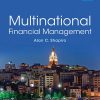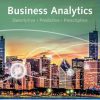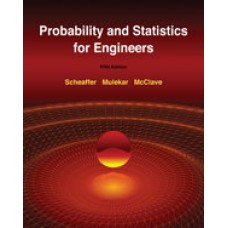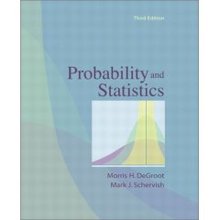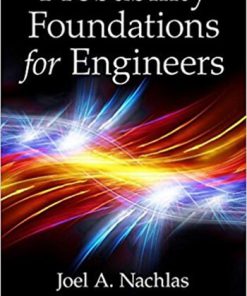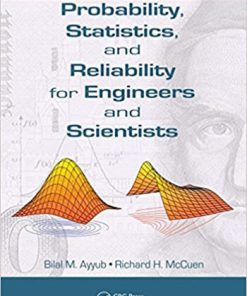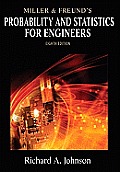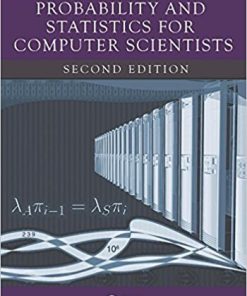Solution Manual for Applied Statistics and Probability for Engineers 7th by Montgomery
$35.00 Original price was: $35.00.$26.50Current price is: $26.50.
Solution Manual for Applied Statistics and Probability for Engineers 7th by Montgomery
Instant download Solution Manual for Applied Statistics and Probability for Engineers 7th by Montgomery pdf docx epub after payment.
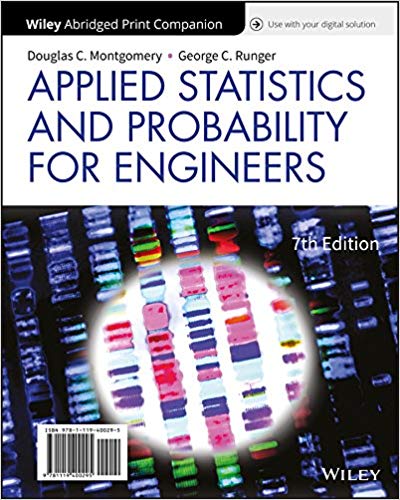
Product details:
- ISBN-10 : 1119400309
- ISBN-13 : 978-1119400301
- Author: Douglas C. Montgomery; George C. Runger
- Applied Statistics and Probability for Engineers provides a practical approach to probability and statistical methods. Students learn how the material will be relevant in their careers by including a rich collection of examples and problem sets that reflect realistic applications and situations. This product focuses on real engineering applications and real engineering solutions while including material on the bootstrap, increased emphasis on the use of p-value, coverage of equivalence testing, and combining p-values. The base content, examples, exercises and answers presented in this product have been meticulously checked for accuracy.
Table Of Contents:
1 The Role of Statistics in Engineering 1
1.1 The Engineering Method and Statistical Thinking 2
1.1.1 Variability 3
1.1.2 Populations and Samples 5
1.2 Collecting Engineering Data 5
1.2.1 Basic Principles 5
1.2.2 Retrospective Study 5
1.2.3 Observational Study 6
1.2.4 Designed Experiments 6
1.2.5 Observing Processes Over Time 9
1.3 Mechanistic and Empirical Models 12
1.4 Probability and Probability Models 15
2 Probability 17
2.1 Sample Spaces and Events 18
2.1.1 Random Experiments 18
2.1.2 Sample Spaces 19
2.1.3 Events 21
2.2 Counting Techniques 23
2.3 Interpretations and Axioms of Probability 26
2.4 Unions of Events and Addition Rules 29
2.5 Conditional Probability 31
2.6 Intersections of Events and Multiplication and Total Probability Rules 34
2.7 Independence 36
2.8 Bayes’ Theorem 39
2.9 Random Variables 40
3 Discrete Random Variables and Probability Distributions 42
3.1 Probability Distributions and Probability Mass Functions 43
3.2 Cumulative Distribution Functions 45
3.3 Mean and Variance of a Discrete Random Variable 47
3.4 Discrete Uniform Distribution 49
3.5 Binomial Distribution 51
3.6 Geometric and Negative Binomial Distributions 55
3.7 Hypergeometric Distribution 59
3.8 Poisson Distribution 63
4 Continuous Random Variables and Probability Distributions 66
4.1 Probability Distributions and Probability Density Functions 67
4.2 Cumulative Distribution Functions 70
4.3 Mean and Variance of a Continuous Random Variable 71
4.4 Continuous Uniform Distribution 72
4.5 Normal Distribution 73
4.6 Normal Approximation to the Binomial and Poisson Distributions 79
4.7 Exponential Distribution 83
4.8 Erlang and Gamma Distributions 86
4.9 Weibull Distribution 89
4.10 Lognormal Distribution 90
4.11 Beta Distribution 92
5 Joint Probability Distributions 95
5.1 Joint Probability Distributions for Two Random Variables 96
5.2 Conditional Probability Distributions and Independence 102
5.3 Joint Probability Distributions for More Than Two Random Variables 107
5.4 Covariance and Correlation 110
5.5 Common Joint Distributions 113
5.5.1 Multinomial Probability Distribution 113
5.5.2 Bivariate Normal Distribution 115
5.6 Linear Functions of Random Variables 117
5.7 General Functions of Random Variables 120
5.8 Moment-Generating Functions 121
6 Descriptive Statistics 126
6.1 Numerical Summaries of Data 127
6.2 Stem-and-Leaf Diagrams 131
6.3 Frequency Distributions and Histograms 135
6.4 Box Plots 139
6.5 Time Sequence Plots 140
6.6 Scatter Diagrams 142
6.7 Probability Plots 144
7 Point Estimation of Parameters and Sampling Distributions 148
7.1 Point Estimation 149
7.2 Sampling Distributions and the Central Limit Theorem 150
7.3 General Concepts of Point Estimation 156
7.3.1 Unbiased Estimators 156
7.3.2 Variance of a Point Estimator 157
7.3.3 Standard Error: Reporting a Point Estimate 158
7.3.4 Bootstrap Standard Error 159
7.3.5 Mean Squared Error of an Estimator 160
7.4 Methods of Point Estimation 161
7.4.1 Method of Moments 162
7.4.2 Method of Maximum Likelihood 163
7.4.3 Bayesian Estimation of Parameters 167
8 Statistical Intervals for a Single Sample 170
8.1 Confidence Interval on the Mean of a Normal Distribution, Variance Known 172
8.1.1 Development of the Confidence Interval and Its Basic Properties 172
8.1.2 Choice of Sample Size 175
8.1.3 One-Sided Confidence Bounds 176
8.1.4 General Method to Derive a Confidence Interval 176
8.1.5 Large-Sample Confidence Interval for μ 177
8.2 Confidence Interval on the Mean of a Normal Distribution, Variance Unknown 179
8.2.1 t Distribution 180
8.2.2 t Confidence Interval on μ 181
8.3 Confidence Interval on the Variance and Standard Deviation of a Normal Distribution 182
8.4 Large-Sample Confidence Interval for a Population Proportion 185
8.5 Guidelines for Constructing Confidence Intervals 188
8.6 Bootstrap Confidence Interval 189
8.7 Tolerance and Prediction Intervals 189
8.7.1 Prediction Interval for a Future Observation 189
8.7.2 Tolerance Interval for a Normal Distribution 191
…
People also search:
applied statistics and probability for engineers
|
is applied probability and statistics hard
applied probability and statistics for engineers
|
applied engineering statistics
probability and engineering statistics
You may also like…
Solution Manual
Solution Manual for Probability Statistics and Random Processes for Engineers 4th Edition by Stark
Solution Manual
Probability and Statistics Degroot 3rd Edition Solutions Manual
Solution Manual
Probability Statistics and Reliability for Engineers and Scientists 3rd Ayyub Solution Manual
Solution Manual
Solution Manual
Solution Manual


